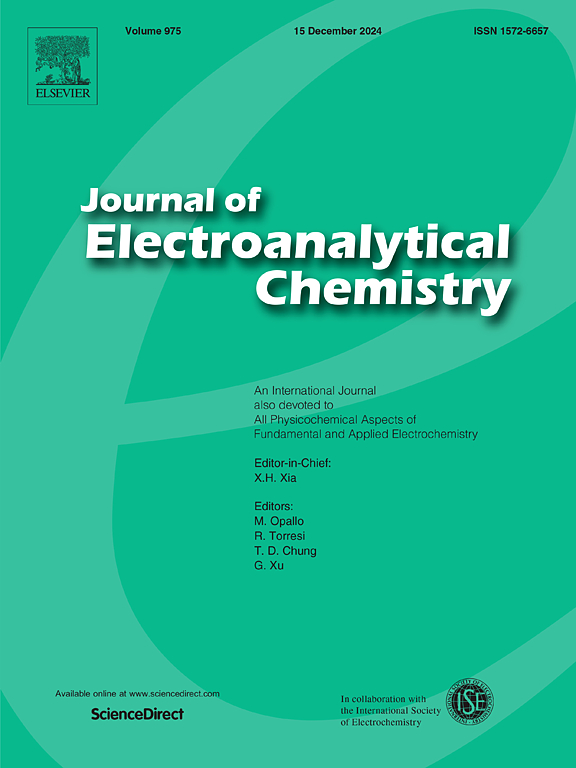3D layer shape electrode of NiS in-situ growth on shaddock peel derived carbon for high-performance supercapacitors
IF 4.1
3区 化学
Q1 CHEMISTRY, ANALYTICAL
引用次数: 0
Abstract
Transition metal sulfide has excellent high electrical conductivity and excellent electrochemical activity. However, the use of transition metal sulfides as electrode materials still have two disadvantages. On one hand, their kinetic performance in redox reactions is poor. On the other hand, the Faraday redox reaction only occurs on the upper surface of the electrode material, and the short diffusion distance of the electrode into which the electrolyte enters makes it difficult to participate in the electrochemical charge storage inside the electrode, resulting in low energy density. Porous carbon has various pore structures and a large specific surface area. In addition, its surface possesses rich oxygen-containing active substances, which can enhance wettability. The addition of porous carbon to the sulfide can greatly improve its energy density. Hence, in this paper, a 5-SPC@NiS (NiS is grown in situ on grapefruit peel-derived carbon with a mass fraction of 5 %) with a layered sheet structure was synthesized by hydrothermal method, the specific capacitance of 5-SPC@NiS is as high as 1911 F g−1 at 0.5 A g−1. It also shows excellent electrochemical performance in practical applications, with an energy density of 14.6 Wh kg−1 (supercapacitor) and 31.3 Wh kg−1 (zinc ion battery). Overall, it provides a new solution to the energy challenges.
求助全文
约1分钟内获得全文
求助全文
来源期刊
CiteScore
7.80
自引率
6.70%
发文量
912
审稿时长
2.4 months
期刊介绍:
The Journal of Electroanalytical Chemistry is the foremost international journal devoted to the interdisciplinary subject of electrochemistry in all its aspects, theoretical as well as applied.
Electrochemistry is a wide ranging area that is in a state of continuous evolution. Rather than compiling a long list of topics covered by the Journal, the editors would like to draw particular attention to the key issues of novelty, topicality and quality. Papers should present new and interesting electrochemical science in a way that is accessible to the reader. The presentation and discussion should be at a level that is consistent with the international status of the Journal. Reports describing the application of well-established techniques to problems that are essentially technical will not be accepted. Similarly, papers that report observations but fail to provide adequate interpretation will be rejected by the Editors. Papers dealing with technical electrochemistry should be submitted to other specialist journals unless the authors can show that their work provides substantially new insights into electrochemical processes.

 求助内容:
求助内容: 应助结果提醒方式:
应助结果提醒方式:


